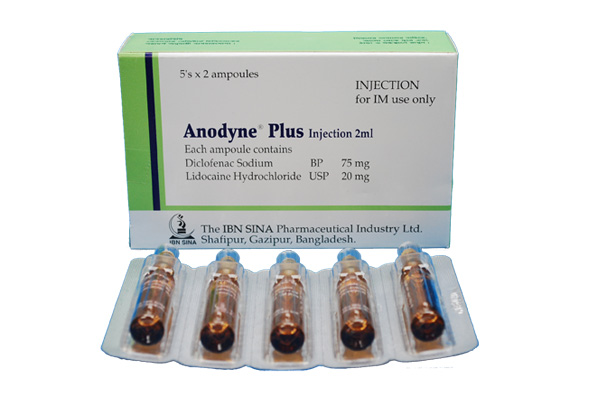
ANODYNE PLUS
DICLOFENAC SODIUM BP & LIDOCAINE USP
| NAME | STRENGTH | PACK SIZE | DOSAGE FORM |
|---|---|---|---|
| ANODYNE PLUS (75MG +20MG)/2ML | (75MG +20MG)/2ML | 10 S | INJECTION |
Adults: By deep IM injection into the gluteal muscle, acute exacerbations and post-operative - One ampoule once daily (twice daily in severe cases) for max. of 2 days. Renal / ureteric colic: One ampoule once daily intramuscularly. A further ampoule may be administered after 30 minutes, if necessary. Maximum daily dose: Diclofenac 150 mg, Lidocaine 200mg. Children : In Juvenile chronic arthritis: 1-3 mg of diclofenac/kg body wt. daily in divided doses. Elderly patients: In elderly or debilitated patients, the lowest effective dosage is recommended, commensurate with age and physical status, or as prescribed by the physician.
Active peptic ulcer; asthma, aspirin or any non-steroid anti-inflammatory induced allergy. Previous sensitivity to diclofenac sodium concomitant NSAID (intravenous use) or anticoagulant use (including low-dose heparin). Operations associated with a high risk of hemorrhage (intravenous use). Moderate or severe renal impairment (serum creatinine > 160 mmol. L-1), hypovolaemia or dehydration from any cause.
Each box contains 5 x 2's blister of 2 ml ampoules.
